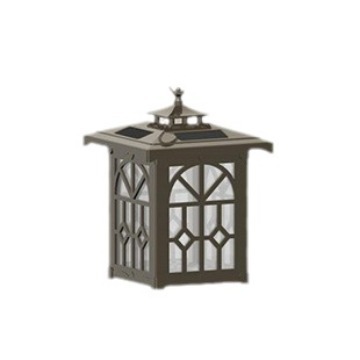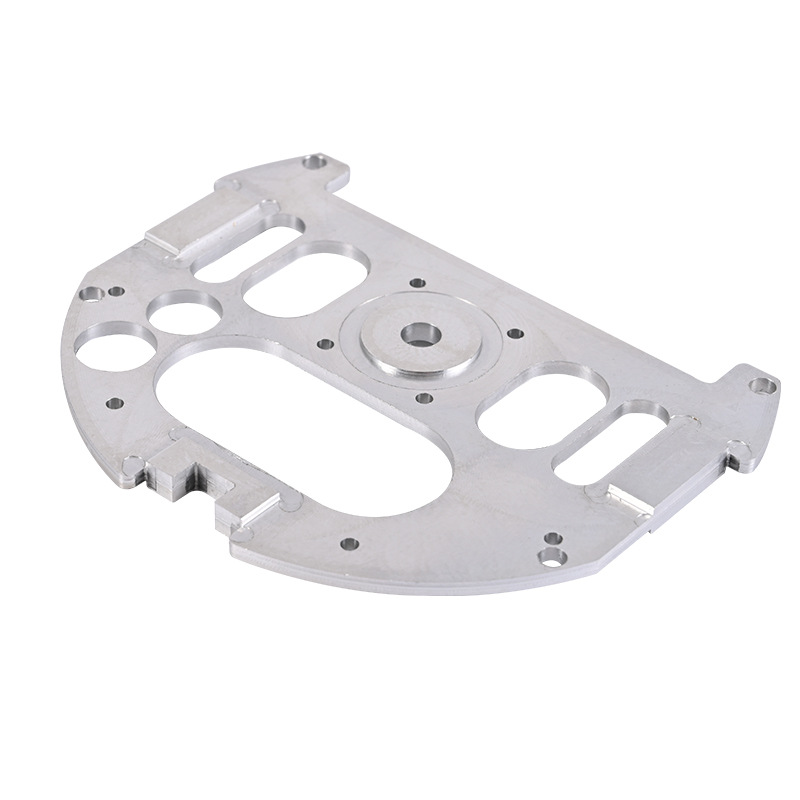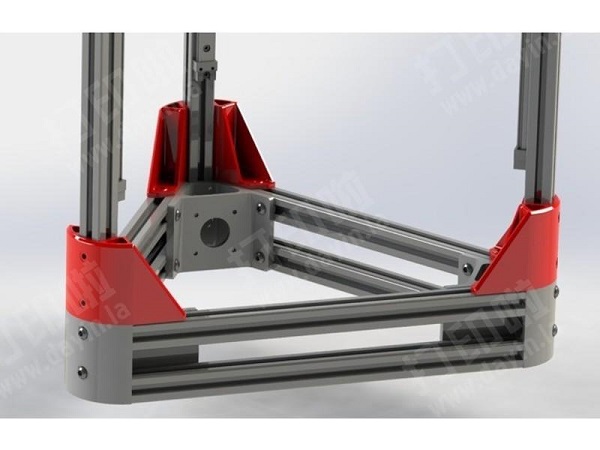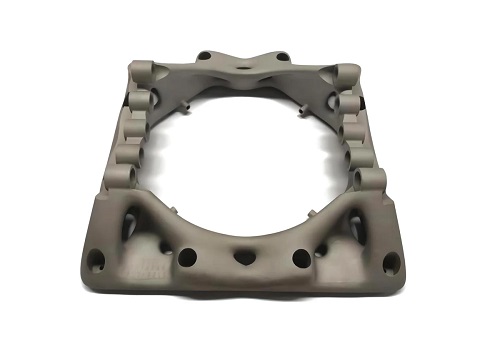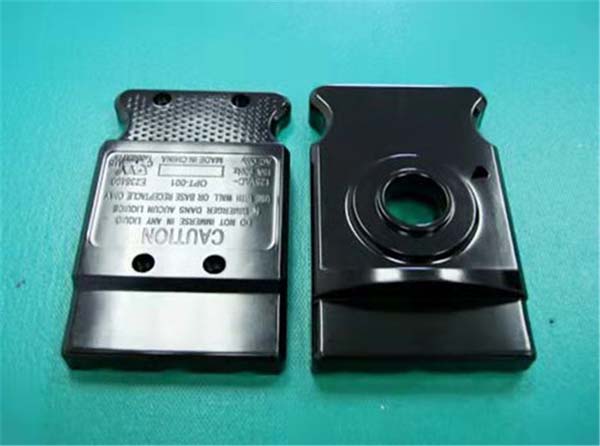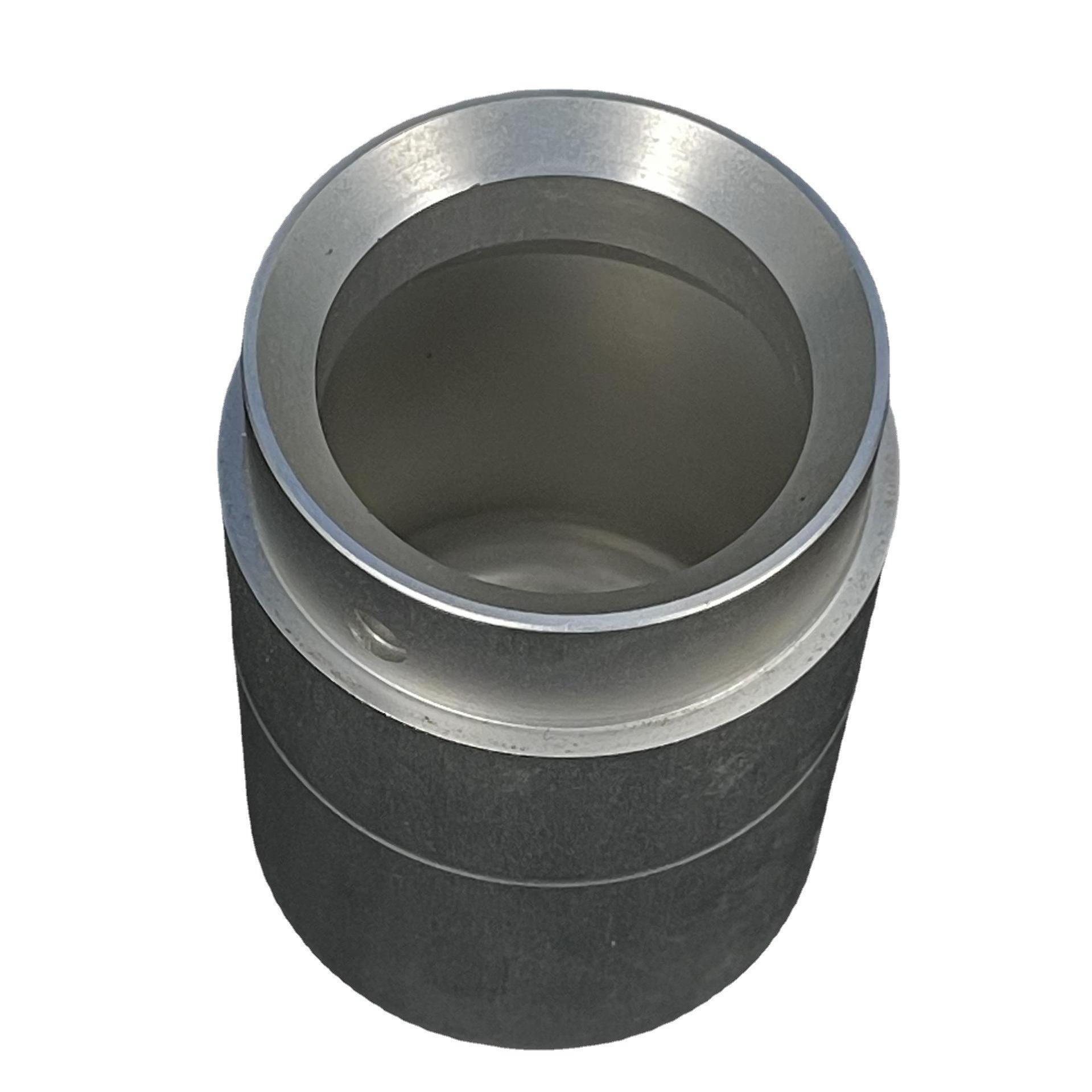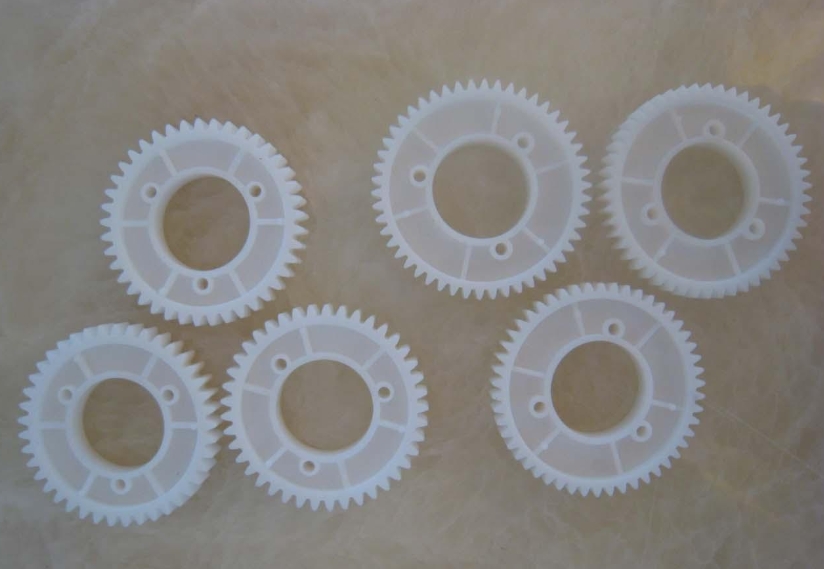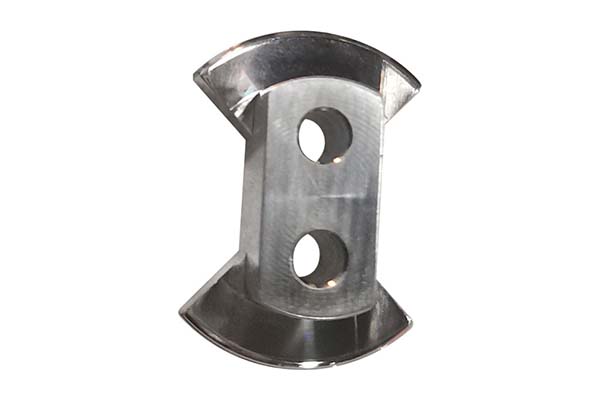The Power Unleashed: Advantages of 3D Printing for Metal Parts
Design Freedom Redefined
3D printing has revolutionized the design landscape, especially when it comes to metal parts. Traditional manufacturing methods such as casting, forging, and machining come with inherent design constraints. For instance, in machining, creating undercuts, internal cavities, or complex lattice structures can be extremely challenging, if not impossible. However, 3D printing, specifically techniques like Selective Laser Melting (SLM) and Electron Beam Melting (EBM), allows designers to bring their most intricate ideas to life.
Take, for Yigu Technology example, the aerospace industry. Turbine blades in jet engines need to be highly efficient, which often requires complex cooling channels within the blades. With 3D printing, these internal channels can be designed and printed with precision, optimizing the cooling process and enhancing the overall performance of the turbine blade. A study by GE Aviation found that by using 3D - printed metal parts, they were able to reduce the weight of some components by up to 40% while improving their performance by 50%. This was achieved through the creation of complex geometries that were not achievable with traditional manufacturing.
Cost - Efficiency in the Long Run
While the upfront cost of 3D printing equipment and materials may seem high, a closer look reveals significant long - term cost - saving potential. One of the most notable cost - reduction aspects is the elimination of mold costs. In traditional manufacturing, especially for injection molding or die - casting, creating molds can be extremely expensive, often costing tens of thousands or even hundreds of thousands of dollars. This makes small - batch production cost - prohibitive.
3D printing, on the other hand, is a mold - less manufacturing process. For a small - batch production run of 100 metal parts, a traditional injection - molding process might require a mold investment of $50,000. In contrast, 3D printing these parts would eliminate the mold cost entirely. Additionally, 3D printing reduces material waste. Traditional subtractive manufacturing processes often result in a large amount of material being removed and discarded. In some cases, up to 90% of the original material can be wasted. With 3D printing, which is an additive process, material is only used where it is needed, reducing waste significantly.
Rapid Prototyping and Iteration
The speed at which 3D printing can produce prototypes is a game - changer in product development. In the past, creating a metal prototype could take weeks or even months. This involved multiple steps such as machining the parts from raw materials, assembling them, and then testing. With 3D printing, a metal prototype can be produced in a matter of days or even hours, depending on the complexity of the part.
Consider a product design company working on a new handheld power tool. Using traditional methods, the first prototype would take 6 - 8 weeks to be ready for testing. After testing, if design changes were required, the process would need to be repeated, adding more time to the development cycle. With 3D printing, the first prototype can be ready in 3 - 5 days. If there are design flaws, the digital model can be quickly modified, and a new prototype can be printed within another day or two. This rapid iteration process not only saves time but also reduces the overall cost of product development, as fewer resources are wasted on long - cycle prototyping.
Customization at Scale
3D printing enables the production of customized metal parts on a scale that was previously unimaginable. In industries such as healthcare and automotive, the ability to provide personalized solutions is becoming increasingly important. For Yigu Technology example, in dentistry, 3D - printed metal crowns and bridges can be customized to fit each patient's unique dental structure.
A dental laboratory can use 3D scanning technology to create a digital model of a patient's teeth. This model is then used to design a custom - fit metal crown, which can be 3D - printed in a matter of hours. In the automotive industry, manufacturers can offer customized metal parts for high - end or specialty vehicles. Instead of producing a one - size - fits - all part, they can print parts that are tailored to the specific needs of the vehicle, such as custom - designed suspension components for a race car or unique interior trim pieces for a luxury vehicle. This level of customization not only meets the diverse needs of customers but also adds value to the products and services offered by companies.
3D Printing vs Traditional Manufacturing: A Detailed Comparison
Cost Comparison
Cost is a crucial factor when choosing a manufacturing method. In traditional manufacturing, the initial investment can be substantial. For Yigu Technology example, in injection molding, creating a mold for a small - scale production of plastic parts can cost between \(5,000 and \)50,000, depending on the complexity of the part. This high mold cost makes traditional manufacturing less cost - effective for small - batch production.
In contrast, 3D printing eliminates the need for molds. For a small - batch production of 100 metal parts, a traditional machining process might have a total cost of \(15,000, which includes \)5,000 for machining setup, \(8,000 for raw materials, and \)2,000 for labor. With 3D printing, the cost might be around \(8,000, mainly consisting of \)5,000 for metal powder (raw material), \(2,000 for machine operation, and \)1,000 for post - processing.
However, as the production volume increases, the cost - effectiveness of traditional manufacturing can improve. For a large - scale production of 10,000 parts, traditional manufacturing can take advantage of economies of scale. The per - unit cost for traditional manufacturing might drop to \(5 per part, while 3D printing, due to its slower production speed and continuous material and energy consumption, might have a per - unit cost of \)8 - $10.
| Production Scale | 3D Printing Cost | Traditional Manufacturing Cost |
| Small - batch (e.g., 100 parts) | Around \(8,000 (material: \)5,000; machine operation: \(2,000; post - processing: \)1,000) | Around \(15,000 (machining setup: \)5,000; raw materials: \(8,000; labor: \)2,000) |
| Large - batch (e.g., 10,000 parts) | \(8 - \)10 per part | Around $5 per part |
Time Comparison
Time is of the essence in product development and production. In traditional manufacturing, the product development cycle can be long. Consider a new product design. The design phase might take 2 - 3 months, followed by 1 - 2 months for creating molds or tooling. Then, the actual production setup and production can take another 1 - 2 months. So, in total, it can take 4 - 7 months from the initial design to having the first batch of products.
3D printing, on the other hand, can significantly reduce this time. The design can be quickly transferred into a 3D model and sent for printing. A simple metal part can be printed within a few days, and even a complex part might take only a week or two. The entire product development cycle, from design to having a prototype, can be completed in 1 - 2 months.
In terms of production cycle, traditional manufacturing often requires long - term production runs to be efficient. Setting up a production line for a new product can take weeks, and each production cycle might last for days or weeks, depending on the complexity of the product and the production volume. For example, a complex metal component produced through traditional forging and machining processes might have a production cycle of 2 - 3 weeks for a batch of 100 units.
3D printing can start production immediately after the design is finalized. A 3D - printed metal part can be produced in a matter of hours to a few days, depending on its size and complexity. For a small - batch production of 100 metal parts, 3D printing can complete the production in 1 - 2 weeks, much faster than the traditional 2 - 3 weeks.
| Manufacturing Method | Product Development Cycle | Production Cycle (for 100 parts) |
| 3D Printing | 1 - 2 months | 1 - 2 weeks |
| Traditional Manufacturing | 4 - 7 months | 2 - 3 weeks |
Design Complexity Comparison
The ability to handle design complexity is where 3D printing truly shines. In traditional manufacturing, complex geometries come at a high cost. For instance, creating a part with internal channels or lattice structures using traditional machining or casting methods can be extremely challenging. Machining such parts would require multiple setups, special tools, and a high level of expertise, which increases the production cost significantly. Casting might require complex core - making processes, and there are limitations to the complexity of the cores that can be produced.
Yigu Technology 3D printing has no such limitations. A metal part with intricate internal channels, like those in a heat exchanger, can be printed directly. The 3D printer can precisely deposit material layer by layer, creating the complex internal structure without the need for additional tooling or complex manufacturing steps. A study by a leading automotive parts manufacturer found that when producing a complex engine component, 3D printing reduced the manufacturing time by 60% compared to traditional methods. The traditional method required over 20 manufacturing steps, while 3D printing completed the part in just a few print - and - post - processing steps.
| Part Type | 3D Printing | Traditional Manufacturing |
| Complex - shaped part with internal channels | Can be printed directly with high precision; relatively simple process | Requires multiple manufacturing steps, complex tooling, and high cost |
| Part with lattice structures | Easily achievable; lattice structures can be designed and printed to optimize strength - to - weight ratio | Difficult to manufacture; may require multiple assembly steps and special processes |
FAQs
1. What are the most common metals used in 3D printing?
The most common metals used in 3D printing include titanium alloys, aluminum alloys, stainless steels, and nickel - based alloys. Titanium alloys, such as Ti - 6Al - 4V, are popular in aerospace and medical applications due to their high strength - to - weight ratio and excellent biocompatibility. Aluminum alloys, like AlSi10Mg, are favored for their lightweight properties and good thermal conductivity, often used in automotive and aerospace industries. Stainless steels, such as 316L and 17 - 4PH, are known for their corrosion resistance and are used in various applications including food processing and marine industries. Nickel - based alloys, like Inconel 718, offer high - temperature strength and are used in gas turbines and aerospace components.
2. Is 3D printed metal parts as strong as traditionally manufactured ones?
In many cases, 3D printed metal parts can be as strong as, or even stronger than, traditionally manufactured ones. The strength of 3D printed metal parts depends on several factors, including the printing process, material properties, and post - processing treatments. For example, parts printed using Selective Laser Melting (SLM) can have a fine - grained microstructure, which can enhance their mechanical properties. In some aerospace applications, 3D printed titanium alloy parts have shown equivalent or better fatigue strength compared to traditionally forged parts. However, it's important to note that proper design, process optimization, and quality control are crucial to ensure the strength of 3D printed metal parts. If not properly executed, issues such as porosity in the printed parts can reduce their strength.
3. How much does it cost to start a 3D printing metal parts business?
The cost to start a 3D printing metal parts business can vary significantly. The major cost components include 3D printing equipment, materials, software, and a suitable workspace. A mid - range industrial 3D printer for metal parts can cost between \(50,000 and \)500,000, depending on its capabilities and build volume. Metal powders, which are the raw materials for metal 3D printing, can cost several hundred to a few thousand dollars per kilogram, depending on the type of metal. Software for design, slicing, and process control may have an initial cost of a few thousand dollars, with annual maintenance fees. Additionally, you'll need to factor in the cost of a workspace, which should be climate - controlled to ensure the stability of the 3D printing process. Rent, utilities, and insurance for the workspace can add up to several thousand dollars per month. Labor costs for operators, engineers, and quality control personnel also need to be considered. In total, starting a small - scale 3D printing metal parts business could require an initial investment of at least $100,000, while a more comprehensive setup could cost several million dollars.
